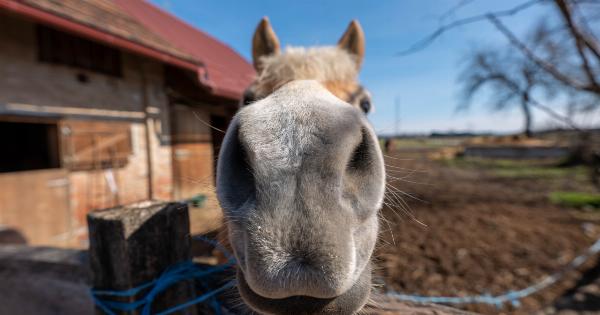An upper respiratory infection (URI) is a viral infection that affects the human respiratory system. Some common types of URIs include the common cold, sinusitis, laryngitis, and pharyngitis.
These infections are contagious, and they spread from person-to-person through contact with respiratory secretions or by touching the surface contaminated with the virus.
Symptoms
The symptoms of an upper respiratory infection may vary depending on the type of infection, and the severity of the infection. Some common symptoms of URIs include:.
: 1. Coughing
Coughing is one of the most common symptoms of an upper respiratory infection. The cough may be dry or wet (producing mucus), and can be very persistent and annoying.
: 2. Sneezing
Sneezing is another common symptom of a URI. It can be triggered when the virus irritates the nasal mucous membrane. Sneezing may be accompanied by a runny nose, nasal congestion, and sore throat.
: 3. Sore throat
A sore throat is a common symptom of viral infections, including URIs. The soreness may be mild or severe, and may be accompanied by coughing or difficulty swallowing.
: 4. Runny nose
A runny nose is a typical symptom of a viral infection like an upper respiratory infection. The nose may produce a clear or whitish mucous that can be thick or thin.
: 5. Nasal congestion
Nasal congestion is a common symptom of an upper respiratory infection. It occurs when the nasal passages become congested with mucus. This can cause difficulty breathing, headaches, and sinus pressure.
: 6. Headaches
Headaches can be a sign of an upper respiratory infection. They may be caused by sinus inflammation or congestion, dehydration, or fever. Headaches often occur with other common symptoms of a URI such as sore throat and coughing.
: 7. Fatigue
Fatigue is another symptom of an upper respiratory infection. The body may feel tired and weak due to the immune system’s response to the virus. Rest is important to help the body fight off the infection.
: 8. Body aches
Body aches may be a symptom of a viral infection. The muscles and joints may feel painful and tender. Staying hydrated and getting rest can help to reduce the severity of body aches.
: 9. Fever
A fever may be present with an upper respiratory infection. The body temperature may be elevated due to the immune system’s response to the virus. Drinking plenty of fluids and resting can help reduce the severity of fever.
: 10. Wheezing
Wheezing can be a symptom of an upper respiratory infection. It occurs when the airways become inflamed or obstructed, and breathing becomes difficult. Wheezing may occur with coughing and chest tightness.
Conclusion
It is essential to recognize the symptoms of an upper respiratory infection to seek the proper diagnosis and treatment. Complications such as pneumonia, ear infection, or bronchitis can arise, leading to more severe health issues.
If you experience any of the above symptoms, seek medical attention. Rest, hydration, and over-the-counter medications such as pain relievers, cough suppressants, and decongestants can help to relieve the symptoms of a URI.






























